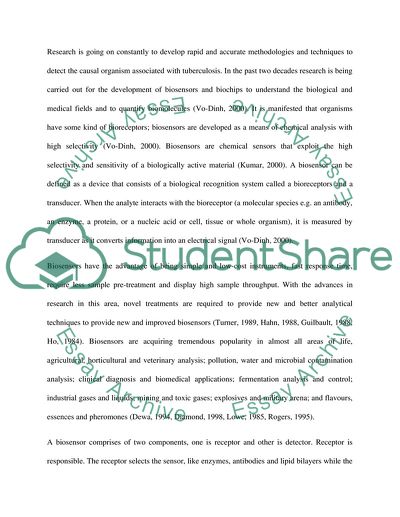Cite this document
(“Proposal to develop biosensor system for rapid diagnosis of infection Essay”, n.d.)
Proposal to develop biosensor system for rapid diagnosis of infection Essay. Retrieved from https://studentshare.org/miscellaneous/1553935-proposal-to-develop-biosensor-system-for-rapid-diagnosis-of-infection-with-drug-resistant-mycobacterium-tuberculosis-tb-in-accident-and-er-in-hospital
Proposal to develop biosensor system for rapid diagnosis of infection Essay. Retrieved from https://studentshare.org/miscellaneous/1553935-proposal-to-develop-biosensor-system-for-rapid-diagnosis-of-infection-with-drug-resistant-mycobacterium-tuberculosis-tb-in-accident-and-er-in-hospital
(Proposal to Develop Biosensor System for Rapid Diagnosis of Infection Essay)
Proposal to Develop Biosensor System for Rapid Diagnosis of Infection Essay. https://studentshare.org/miscellaneous/1553935-proposal-to-develop-biosensor-system-for-rapid-diagnosis-of-infection-with-drug-resistant-mycobacterium-tuberculosis-tb-in-accident-and-er-in-hospital.
Proposal to Develop Biosensor System for Rapid Diagnosis of Infection Essay. https://studentshare.org/miscellaneous/1553935-proposal-to-develop-biosensor-system-for-rapid-diagnosis-of-infection-with-drug-resistant-mycobacterium-tuberculosis-tb-in-accident-and-er-in-hospital.
“Proposal to Develop Biosensor System for Rapid Diagnosis of Infection Essay”, n.d. https://studentshare.org/miscellaneous/1553935-proposal-to-develop-biosensor-system-for-rapid-diagnosis-of-infection-with-drug-resistant-mycobacterium-tuberculosis-tb-in-accident-and-er-in-hospital.


